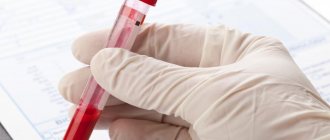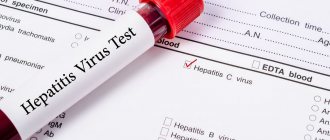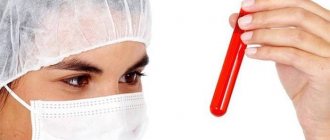To obtain reliable results from hormone tests, you need to prepare for them in a certain way. The endocrine system has a great influence on the human body as a whole. If some changes occur somewhere, then there is a response from the hormones. Depending on what hormones need to be tested for, the preparation rules are slightly different. The result of the analysis may be influenced by smoking, drinking alcohol, undergoing physical and emotional stress, taking medications, the phase of the cycle in women, etc.
general information
Sex hormones are usually divided into three large groups:
- androgens,
- estrogens,
- progestins.
Androgens are male sex hormones; they circulate in the female body in small quantities, while estrogens, on the contrary, predominate in women. Progestins, or gestagens, are considered hormones responsible for the course of pregnancy. In addition, prolactin, follicle-stimulating and luteinizing hormone regulate the functioning of the reproductive system. The concentration of these substances is recommended to be checked together with an analysis for estrogens, androgens and gestagens.
| Name | Where are they produced? |
| Estrogen | Ovarian follicle membrane, adrenal glands, corpus luteum |
| Progesterone | Ovaries |
| Somatotropin | Pituitary |
| Norepinephrine | Adrenal glands |
| Oxytocin | Pituitary |
| Serotonin and its indole derivative melatonin | Pineal gland |
| Thyroid group (thyroxine, triiodothyronine) | Thyroid |
| Testosterone | Adrenal glands |
| LH and FSH | Pituitary |
| Prolactin | Pituitary |
| Insulin | Pancreas |
Indications for the study
All indications for studying the level of sex hormones can be divided into two groups - male and female. It is recommended to take an analysis for the concentration of biologically active substances in women in the following situations:
- male pattern hair growth;
- decreased sex drive;
- anovulatory menstrual cycles;
- oligomenorrhea or complete absence of menstruation;
- functional uterine bleeding;
- inability to conceive a child for a year or longer;
- spontaneous miscarriages or premature births;
- delayed sexual development or premature appearance of secondary sexual characteristics;
- sexual infantilism;
- growth retardation;
- Stein-Leventhal syndrome (polycystic ovaries);
- endometriosis;
- secretion of milk from the mammary glands not associated with feeding the child;
- periodic pain in the mammary glands;
- diagnosis and differential diagnosis of true post-term pregnancy;
- lactation disorders;
- pathological menopause;
- decreased bone density.
Men are recommended to donate blood for sex hormones in the following cases:
- infertility;
- hair loss;
- acne on various parts of the body;
- erectile disfunction;
- decreased or absent sexual desire;
- male menopause;
- signs of primary or secondary hypogonadism;
- prostate diseases, in particular chronic prostatitis;
- decreased bone density.
For representatives of both sexes, analysis is simply necessary when choosing treatment tactics and monitoring the effectiveness of hormone therapy.
Why do you need a blood test for hormones?
Hormonal disorders before and after childbirth or during menopause are considered normal, but even then the level of these substances in the body must be kept under control, because even the slightest deviations indicate problems in the body. The procedure for taking a test for hormones is not included in routine examinations and is prescribed to check the patient for pathologies of the endocrine system, gynecological diseases or in other necessary cases:
- excess weight, indicating changes in hormonal levels;
- failure of menstruation without good reason;
- problems with conceiving a child, i.e. infertility;
- suspicions of disturbances in fetal development in pregnant women;
- acne;
- pregnancy planning, when you need to prepare for conception;
- benign neoplasms in the breast, for example, fibrocystic mastopathy;
- decreased sexual desire;
- miscarriage;
- sexual infantilism;
- tendency to hereditary diseases;
- deterioration of hair or skin condition;
- blood pressure surges;
- severe premenstrual syndrome;
- digestive system disorders;
- the presence of a tumor of the ovaries or uterus;
- establishing pregnancy;
- Excessive body hair.
Which hormone levels should be checked?
The main indicators that are checked when analyzing sex hormones include:
| Name | Bottom line | Upper limit |
| Estradiol | 43,8 | 211 |
| Progesterone | 5,3 | 86 |
| Testosterone | 0,45 | 3,75 |
| Prolactin | 67 | 726 |
| FSH | 1 | 11,8 |
| LH | 1 | 8,8 |
| Thyroxine | 9 | 22 |
| Triiodothyronine | 2,6 | 5,7 |
Prolactin
Normally, prolactin causes and maintains lactation - the production of milk by the mammary glands. In the postpartum period, it promotes the appearance of a milky substance from the mammary glands, which affects the child. The discharge stops on its own a few days after birth. By inhibiting the secretion of FSH, prolactin is responsible for the absence of ovulation in the postpartum period. In addition, by inhibiting the production of estrogen and progesterone, it prevents pregnancy with a new child while breastfeeding the previous one. It has been experimentally established that prolactin has an analgesic effect and also inhibits the action of dopamine, which is responsible for sexual arousal. It probably provides a refractory period.
The hormone takes part in the formation of surfactant in the lungs of the fetus in the last stages of pregnancy.
FSH
Follicle-stimulating hormone stimulates the maturation of the dominant follicle and the development of the egg in it. In addition, FSH triggers the production of estradiol. The maximum concentration of FSH is observed in the middle of the menstrual cycle. It is at this moment that ovulation occurs - the release of a mature egg from the follicle into the abdominal cavity. Picked up by the villi, it moves into the fallopian tube, where conception occurs.
In the male body, FSH is responsible for the development and normal functioning of the testicles, enhances the maturation of male germ cells, and stimulates the production of testosterone.
LH
Secreted by the anterior lobe of the pituitary gland. Together with FSH, it regulates the functioning of the female reproductive system. The maximum concentration of the hormone is observed during the ovulatory period. Normally, it stimulates the ovaries; in men, it activates Leydig cells that produce testosterone.
Estradiol
It is the most active representative of the group of female sex hormones. It is he who is responsible for the development of primary and secondary sexual characteristics of the female type and influences the formation of the menstrual cycle. Stimulates the growth of the functional layer of the uterine mucosa, preparing it for implantation of a fertilized egg. Activates the production of transport proteins in blood plasma.
The level of the hormone depends on the phase of the cycle and correlates with the degree of maturation of the follicle - the closer ovulation is, the higher the concentration of estradiol.
Progesterone
Belongs to the group of gestagens, or pregnancy hormones. Affects the menstrual cycle, pregnancy and embryo development.
The main functions of progesterone include:
- ensures the growth of glands in the uterine mucosa in the second half of the menstrual cycle;
- thickens the mucus of the cervical canal, making it impermeable to sperm;
- reduces the effects of estrogen;
- regulates the functioning of the immune system, preventing the rejection of the embryo as a foreign body;
- reduces the tone of the smooth muscle fibers of the uterus;
- inhibits lactation before the onset of labor, and a decrease in progesterone levels after the birth of a child is a signal for the production of prolactin;
- Probably, a decrease in progesterone concentration is the reason for the onset of labor.
Testosterone
Refers to male sex hormones. Responsible for the development of primary and secondary sexual characteristics according to the male type. Produced from cholesterol by Leydig cells located in the testicles, as well as in small quantities by the ovaries and adrenal cortex in representatives of both sexes. The hormone is responsible for virilization in boys and androgenization in girls. Plays a key role in the production of male reproductive cells, regulates the psycho-emotional background and sexual desire.
Testosterone levels depend on a person's lifestyle, diet, level of physical activity and other factors.
Normal sex hormones in women
Women are characterized by changes in the amount of sex hormones produced. This is due to the specific phase of the menstrual cycle:
- Follicular. The beginning refers to the 1st day of menstruation, and the end refers to the formation of a dominant follicle, i.e. until about 14 days.
- Ovulatory. This includes a period of 3 days after the dominant follicle leaves the egg. This is 14-16 days.
- Luteal. Includes the time from ovulation to the next menstruation, i.e. from 16 to 28 days.
- 6 ways to tighten sagging skin
- Normal human heart rate by age
- What is kurt - composition and beneficial properties of cheese, step-by-step recipes for preparing it at home with photos
Ratio of FSH and LH
Before the onset of puberty, the balance of FSH and LH is 1:1. As you grow older, this proportion gradually becomes 1:1.5, i.e. the amount of luteinizing agent becomes greater. This ratio remains in the normal state of health of a woman until the onset of menopause - the FSH norm in women is approximately 1.5 times less than the amount of LH.
| Hormone | Amount, µU/ml | ||
| Follicular | Ovulatory | Luteal | |
| FSH | 3-10 | 10-46 | 1,4-7 |
| LH | 2-15 | 24-151 | 2-16 |
Hormone progesterone
| Amount, nmol/l | |||||
| Women from 18 to 90 years old | |||||
| Follicular | Ovulatory | Luteal | Climax | ||
| 0,3-2,2 | 0,5-9,4 | 7,0-56,6 | Less than 0.6 | ||
| Pregnant | |||||
| 1st trimester | 2nd trimester | 3rd trimester | |||
| 8,9-468,4 | 71,5-303,1 | 88,7-771,5 | |||
Estradiol
| Hormone | Amount, pg/ml | ||||
| Follicular | Ovulatory | Luteal | Menopause period | Pregnancy | |
| Estradiol | 57-227 | 127-476 | 77-227 | 19,7-82 | Variable from 210 to 26,960 |
Testosterone levels in women
When analyzing the hormone testosterone in women, 2 types are examined: total and free. The first indicates the level of this substance, associated and not associated with protein transport. The latter indicator is indicated by free testosterone. The total level is 0.26-1.3 ng/ml. The amount of free testosterone depends not on the phase of the cycle, but on the age of the woman.
| Hormone | Amount, pg/ml | |||
| Up to 20 years | 20-39 years old | 40-59 years old | Over 60 years old | |
| Testosterone | 0,13-3,09 | 0,13-3,09 | 0,13-2,6 | 0,13-1,8 |
Prolactin
The permissible level of the hormone prolactin is determined by clinics using individual methods, so even the units of measurement are different. In general, an amount from 4 to 33 ng/ml is considered normal. The number changes during each specific phase of the menstrual cycle. For pregnant women, it is normal for the hormone prolactin to have a high level: its value can range from 34 to 386 ng/ml, and it increases gradually with the development of the fetus.
Hormone DHEA
The abbreviation DHEA is the name for the steroid hormone dehydroepiandrosterone. In women, it is produced by the ovaries, but only in an amount of 5%. The remainder is synthesized by the adrenal glands. For people under 35 years of age, the level of this substance varies from 2660 to 11200 nmol/l. In each trimester, a hormone test in women should show the following DHEA values:
- in 1 – 3.12-12.48 nmol/l;
- in 2 – 1.7-7.0 nmol/l;
- in 3 – 0.86-3.6 nmol/l.
Preparing for tests
A few days before the blood test is taken, especially before the test for female sex hormones, it is necessary to exclude psycho-emotional and physical stress.
It is also not recommended to undergo physiotherapeutic treatment, take oral contraceptives and other medications, except in cases where it is absolutely impossible to stop treatment. In such situations, the decision to stop taking medications is made only by the attending physician. It is highly advisable to switch to a dairy-vegetable diet, stop smoking and drinking alcohol.
You don't have to abstain from sexual activity. When conducting an analysis for female sex hormones for women of childbearing age, the doctor must indicate the date and time of blood collection, the day and phase of the menstrual cycle. If a pregnant woman takes the test, the gestational age must be indicated.
Expert opinion
Gnipova Victoria Viktorovna
For greater information, it is recommended to check the concentration of several biologically active substances at the same time, rather than just one hormone. In addition, in some cases, the doctor may recommend testing at intervals of several menstrual cycles. In this case, the doctor can not only more adequately assess the dynamics of the disease, but also make a correct prognosis for the patient’s health.
If the patient is taking any medications, be sure to inform the doctor before taking blood.
Decoding: norm and deviations
Pituitary hormones have a huge impact on the functioning of the human body. And any deviation from the norm accepted by doctors may indicate existing problems.
Adrenocorticotropic hormone
- the adrenal glands do not produce the required amount of hormones;
- congenital disorder of the production of the hormone cortisol;
- production of excess amounts of CTTG.
Advice! Repeated testing of pituitary hormones must be carried out in the same laboratory where you did it the first time.
Follitropin (FGS)
- men – 1.90-2.40 mIU/ml;
- women: during ovulation - 2.70-6.70 mIU/ml, luteal phase - 2.10-4.10 mIU/ml, menopause - 29.60-54.90 mIU/ml.
- insufficient production of hormones by the ovaries due to their underdevelopment (primary);
- poor sperm production;
- the arrival of menopause;
- presence of Turner or Klinefelter syndrome.
- decreased production of hormones by the hypothalamus;
- secondary ovarian hypofunction, provoked by disturbances of material metabolism and hormonal levels;
- prostate cancer;
- use of oral contraception.
During pregnancy, FSH is almost zero.
Luteotropin
- men – 2.120-4.00 mIU/ml;
- women: during ovulation – 18.20-52.90 mU/ml, follicular phase – 3.30-4.660 mU/ml, luteal phase – 1.540-2.570 mU/ml, menopause – 29.70-43.90 mU/ml .
- improper functioning of the gonads.
- secondary (acquired) failure of the gonads;
- improper functioning of the pituitary gland or hypothalamus;
- possible in case of overdose of progesterone and estrogen.
Somatotrapine
Elevated levels may indicate the development of a disease called gigantism. Decreased production causes stunted growth and physical maturation.
Prolactin
- men – 100.0 – 265.0 µg/l;
- women: childbearing age – 130.0-540.0 mcg/l, menopause – 107.0-290.0 mcg/l.
Exceeding the standard says:
- about the onset of pregnancy;
- about existing pituitary tumors;
- observed in the absence of menstruation (amenorrhea);
- about the presence of primary hypothyroidism (the thyroid gland produces insufficient amounts of hormones);
- about multiple cysts on the ovary;
- possible when taking higher doses of estrogen.
Increased accumulation of the hormone prolactin in male blood indicates problems with potency.
Thyrotropin
- RIA study – 0.60-3.80 µIU/ml;
- IF study – 0.240-2.90 µIU/ml.
Increased results are typical for:
- primary hypothyroidism;
- thyroiditis.
A decrease may indicate:
- secondary hypothyroidism;
- benign formation in the tissues of the thyroid gland;
- probable presence of diffuse toxic goiter.
It is important to remember that a study of the hormonal levels of the pituitary gland should be carried out either before starting treatment or two weeks after stopping the drugs. To evaluate completed therapy, a repeat study is carried out one to two weeks after the last dose taken.
source
How is blood taken?
A standard blood draw for the hormone takes place in the morning, on an empty stomach. The last meal is allowed no later than 10 to 8 hours before the test.
- The prepared patient comes to the clinic at the specified time. The blood draw is carried out by a specially trained nurse. Typically, the patient is asked to lie down on a couch or sit in a special chair. Since blood is drawn from the cubital vein, the patient is asked to expose the upper arm. Then the nurse applies a venous tourniquet to the lower third of the shoulder, and the patient is asked to clench and unclench his fist several times. As a result, the veins become clearly visible, and it is easier for the nurse to perform the manipulation.
- The next stage is treating the skin with an antiseptic solution. Typically this is alcohol. It destroys pathogenic microorganisms well, dries quickly, and leaves no marks on the skin. After treatment twice, the nurse administers the injection and draws the required amount of blood. A sterile cotton ball moistened with alcohol is applied to the injection site, and the patient is asked to bend his arm at the elbow and hold it for several minutes. Literally after 10 minutes the ball can be thrown away, and the patient can go home. The results of the study will be ready the next day.
Calculate dates suitable for taking tests
And have time to sign up for your first free appointment with a fertility specialist before 09/30/20
Results sent successfully. Please check your email.
Clear results
Decoding the results
The concentration of sex hormones in the blood depends on the phase of the menstrual cycle, the treatment performed, and other conditions in which the material was taken, so the doctor must decipher the results obtained. Only a specialist can correctly compare all the data and draw conclusions about the patient’s health status.
It is strongly recommended not to decipher the results yourself or entrust the decoding to a doctor with insufficient qualifications. This can lead to diagnostic error and incorrect treatment.











